
Date: August 31, 2019
Location: Lat: 42.68255°, Lon: -64.21957°
Dive Depth Range: 306 - 358 meters (1,004 - 1,175 feet)
Access Dive Summary and ROV Data
A “squid storm” of shortfin squid (Illex illecebrosus) swarmed around the Deep Discoverer throughout Dive 4 of the Deep Connections 2019 expedition. The squid were seen feeding on shrimp, fish, and possibly each other—but they were not the only ones enjoying a snack! For more information, check out this mission log. Video courtesy of the NOAA Office of Ocean Exploration and Research, Deep Connections 2019. Download larger version (mp4, 96.4 MB).
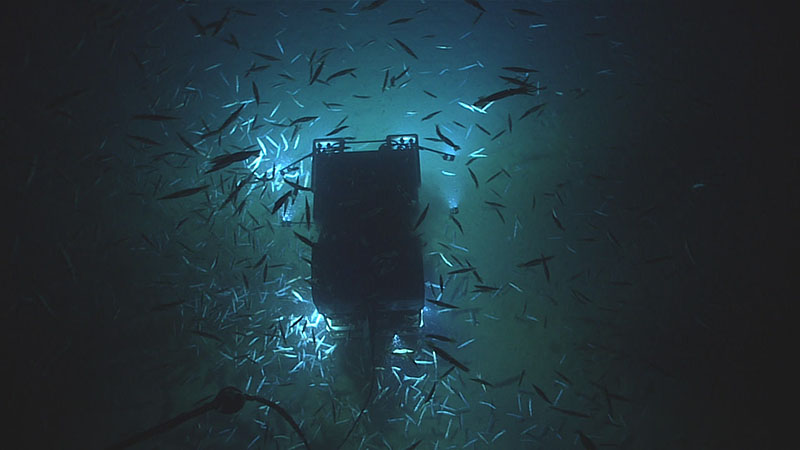
Swarms of shortfin squid feeding on krill surround ROV Deep Discoverer during its descent on the third dive of the Deep Connections 2019 expedition. Image courtesy of the NOAA Office of Ocean Exploration and Research, Deep Connections 2019. Download larger version (jpg, 532 KB).
Today’s dive, proposed by our partners at Fisheries and Oceans Canada (DFO), involved surveying a previously unexplored region of the Scotian Shelf. A habitat suitability model predicted high probabilities for Vazella sponges, commonly known as the Russian hat sponge, in this area. However, this area had not previously been explored using deepwater submersibles, and the purpose of the dive was therefore to ground truth the model predictions. As it turned out, we did not observe Vazella sponges on this dive, but the absence of the species still provides valuable information that will help refine future iterations of the habitat suitability model.
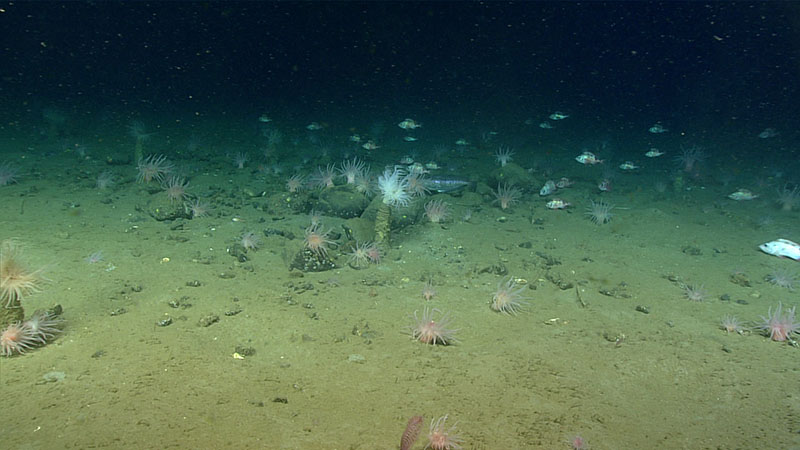
Dense aggregation of anemones, blackbelly rosefish, and seapens around a field of glacial dropstones, as seen on the third dive of the Deep Connections 2019 expedition. Image courtesy of the NOAA Office of Ocean Exploration and Research, Deep Connections 2019. Download larger version (jpg, 1 MB).
As the remotely operated vehicles (ROV) approached the seafloor, a school of shortfin squid surrounded the ROVs and remained closeby for the majority of the dive. ROV Deep Discoverer reached the seafloor at 358 meters (1,175 feet) depth on a soft substrate, which characterized most of the dive. The substrate was generally fine, with sparse dropstones encrusted with anemones. Along the ROV dive track, we documented a variety of different benthic organisms, with abundant sea pens, scorpionfish, polychaete worms, crabs, and anemones.
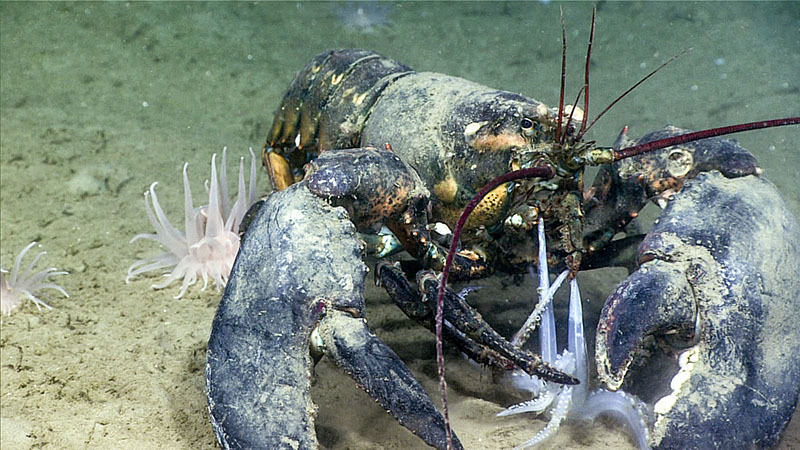
A lobster bites down on squid tentacles during the third dive of the Deep Connections 2019 expedition on August 31, 2019. Image courtesy of the NOAA Office of Ocean Exploration and Research, Deep Connections 2019. Download larger version (jpg, 1.5 MB).
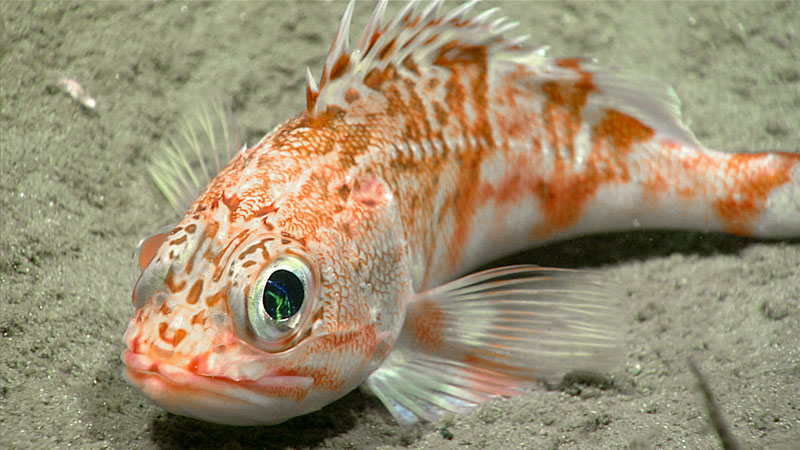
The eyes of a scorpion fish reflect ROV Deep Discoverer during the third dive of the Deep Connections 2019 expedition. Image courtesy of the NOAA Office of Ocean Exploration and Research, Deep Connections 2019. Download larger version (jpg, 1.2 MB).
Several predation events were observed throughout the dive, including squid feeding on krill, squid, and various fish; an anemone feeding on a fish; and the lobster Homarus sp. feeding on a squid. The ROVs also documented two abandoned lobster traps, which were encrusted with hydrozoans and anemones. A single suction sample was taken of a suspected foraminifera at the request of DFO and a squid sample was unintentionally collected because it was attached to the ROV.
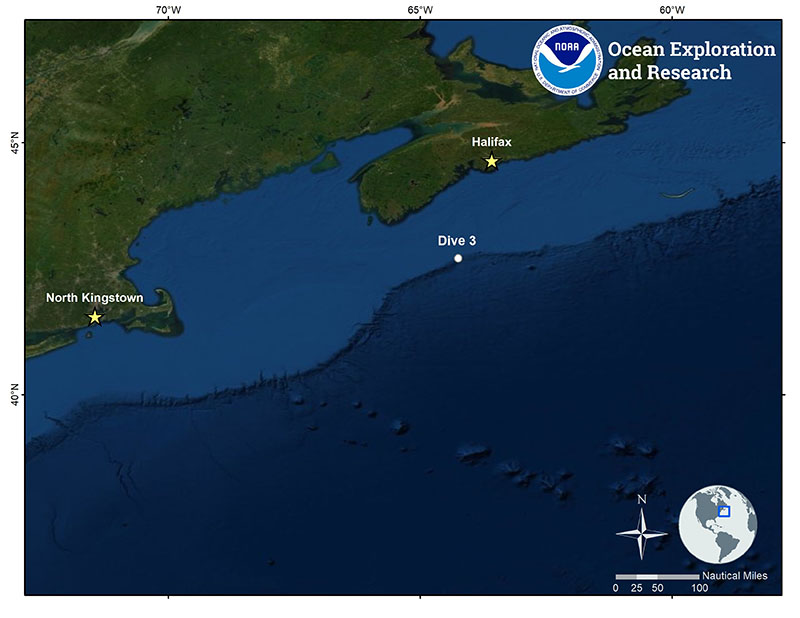
Location of Dive 3 of the Deep Connections 2019 expedition on August 31, 2019. Download larger version (jpg, 1.3 MB).
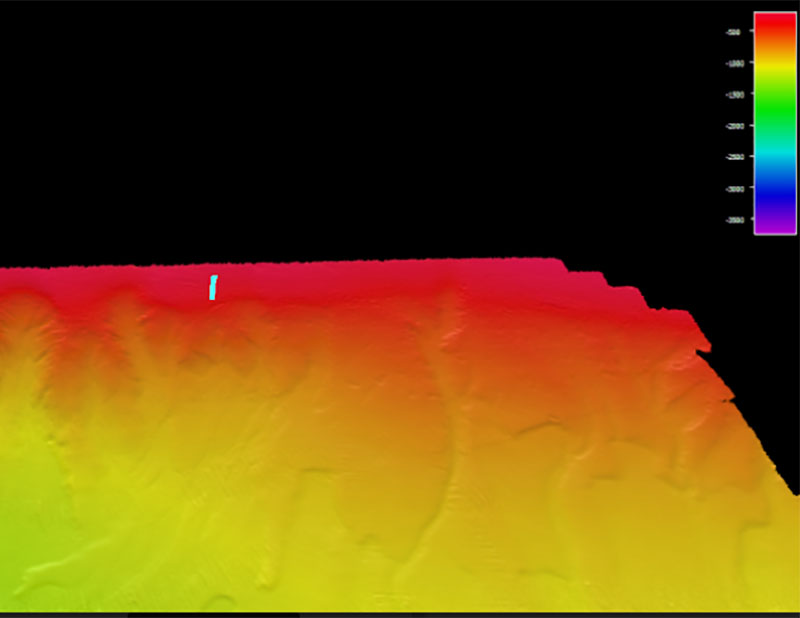
Map showing the dive track of Dive 3 of the Deep Connections 2019 expedition. Download larger version (jpg, 789 KB).